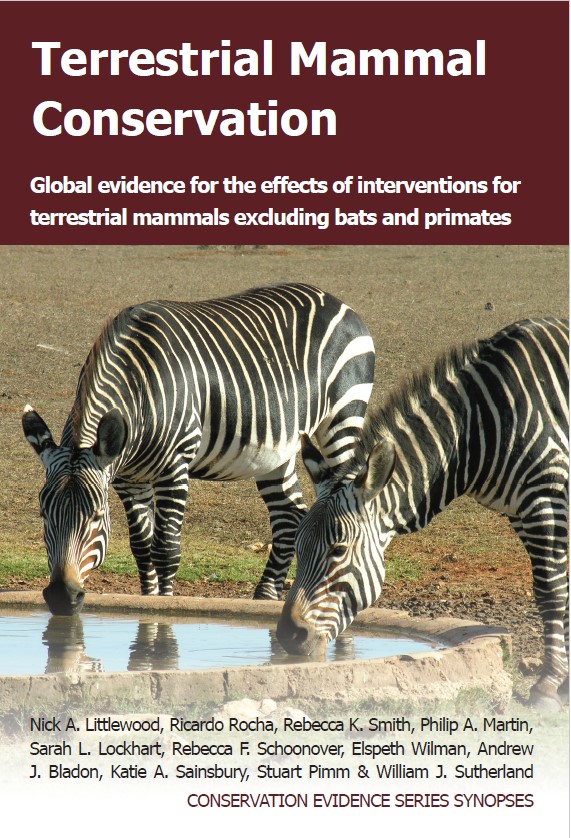Install wildlife exclusion grates/cattle grids
-
Overall effectiveness category Likely to be beneficial
-
Number of studies: 3
View assessment score
Hide assessment score
How is the evidence assessed?
-
Effectiveness
47% -
Certainty
41% -
Harms
0%
Study locations
Supporting evidence from individual studies
A study in 1972–1973 of two fences in Colorado, USA (Reed et al 1974) found that steel rail deer guards did not prevent crossings through vehicle openings by mule deer Odocoileus hemionus hemionus or elk Cervus canadensis. In test conditions, 16 of 18 mule deer released adjacent to 12, 18 or 24-foot-wide guards, crossed the guards, in an average time of 173 s. During natural encounters, 11 mule deer and one elk crossed a 24-ft-long guard and four mule deer crossed a 12-ft-long guard. There were at least 11 approaches by mule deer and three by elk in which animals did not then cross. Guards, at vehicle openings in 8-foot-high fences, comprised flat steel rails, 0.5 inches wide, 4 inches high and 120 inches long, set 4 inches apart. Rails were perpendicular to the traffic direction. Eighteen deer were released in situations where crossing guards provided the only exit. Deer and elk tracks, from natural encounters with two guards, were examined periodically, from 29 June 1972 to 19 April 1973.
Study and other actions testedA replicated, before-and-after study in 2001 in Florida, USA (Peterson et al. 2003) found that one of three deer exclusion grates excluded Florida Key deer Odocoileus virginianus clavium. Only one deer crossed the grate that incorporated diagonal cross members into the metal grid, compared to 305 that crossed when the grate was covered over with plywood. Fifty deer crossed the two grate designs without diagonal cross members, compared to 199 that crossed when covered over. Males were more successful at crossing than females. In 2001, three types of grate were tested for deer-exclusion efficiency. All grates were 6.1 × 6.1 m, each with a different grate pattern: grid of 10 × 13 cm rectangles with diagonal cross member through each rectangle and 8 × 10 cm or 10 × 8 cm rectangles without diagonal cross member. Food was provided within a fenced area accessible only by crossing the grate. Grates were covered (therefore, easily crossable) for 1–2 weeks and then uncovered for one week, three times (for two designs) or once (third design). Infra-red cameras were used to monitor deer crossings.
Study and other actions testedA replicated, before-and-after study in 2003–2010 at two roadside areas in Montana, USA (Allen et al. 2013) found that wildlife exclusion grates reduced crossings of a major highway by deer Odocoileus spp., but not by black bears Ursus americanus. After installing wildlife exclusion grates, a lower proportion of deer approaching the road subsequently crossed it (6%) than did so before grates were installed (44%). The proportion of black bears crossing the road, out of those approaching it, was not significantly different after grates were installed (62%) compared to before they were installed (87%). Between October 2004 and November 2010, fencing was installed along the roadside. Single exclusion grates were fitted at each of two junctions with minor roads. Grates were 6.8 m wide and 6.6 m long. In June–October of 2003–2005, eight 100 × 2 m areas were coated with sand to record animal tracks. Using these data, the percentage of animals that crossed the road was calculated. Wildlife cameras were placed at both grates between July 2008 and July 2010. The number of times an animal was ≤2 m from grates and whether it subsequently crossed were recorded.
Study and other actions tested
Where has this evidence come from?
List of journals searched by synopsis
All the journals searched for all synopses
This Action forms part of the Action Synopsis:
Terrestrial Mammal Conservation
Terrestrial Mammal Conservation - Published 2020
Terrestrial Mammal Conservation





)_2023.JPG)














